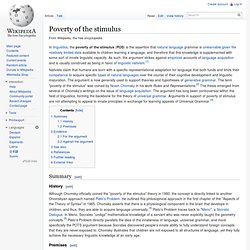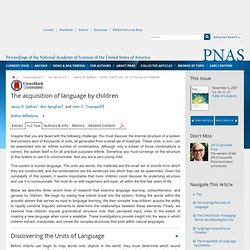

Aprendizaje significativo. El aprendizaje significativo es, según el teórico norteamericano David Ausubel, el tipo de aprendizaje en que un estudiante relaciona la información nueva con la que ya posee, reajustando y reconstruyendo ambas informaciones en este proceso.

Dicho de otro modo, la estructura de los conocimientos previos condiciona los nuevos conocimientos y experiencias, y éstos, a su vez, modifican y reestructuran aquellos. Este concepto y teoría están enmarcados en el marco de la psicología constructivista. El aprendizaje significativo ocurre cuando una nueva información se conecta con un concepto relevante preexistente en la estructura cognitiva, esto implica que las nuevas ideas, conceptos y proposiciones pueden ser aprendidos significativamente en la medida en que otras ideas, conceptos o proposiciones relevantes estén adecuadamente claras y disponibles en la estructura cognitiva del individuo y que funcionen como un punto de anclaje a las primeras. Características[editar] Subsunción derivada. Poverty of the stimulus. In linguistics, the poverty of the stimulus (POS) is the assertion that natural language grammar is unlearnable given the relatively limited data available to children learning a language, and therefore that this knowledge is supplemented with some sort of innate linguistic capacity.

As such, the argument strikes against empiricist accounts of language acquisition and is usually construed as being in favor of linguistic nativism.[1] Nativists claim that humans are born with a specific representational adaptation for language that both funds and limits their competence to acquire specific types of natural languages over the course of their cognitive development and linguistic maturation. The argument is now generally used to support theories and hypotheses of generative grammar. The term "poverty of the stimulus" was coined by Noam Chomsky in his work Rules and Representations.[2] The thesis emerged from several of Chomsky's writings on the issue of language acquisition. Summary[edit] Untitled Document. Present Simple - Lección de Inglés: Presente simple-
Simple Present. [VERB] + s/es in third person Examples: You speak English.

Do you speak English? You do not speak English. Complete List of Simple Present Forms USE 1 Repeated Actions Use the Simple Present to express the idea that an action is repeated or usual. I play tennis. USE 2 Facts or Generalizations The Simple Present can also indicate the speaker believes that a fact was true before, is true now, and will be true in the future. Cats like milk. USE 3 Scheduled Events in the Near Future Speakers occasionally use Simple Present to talk about scheduled events in the near future. The train leaves tonight at 6 PM. USE 4 Now (Non-Continuous Verbs) Speakers sometimes use the Simple Present to express the idea that an action is happening or is not happening now. I am here now. The examples below show the placement for grammar adverbs such as: always, only, never, ever, still, just, etc. You only speak English. Once a week, Tom cleans the car. More About Active / Passive Forms. Ser y Estar : usos y diferencias.
The acquisition of language by children. Author Affiliations Imagine that you are faced with the following challenge.

You must discover the internal structure of a system that contains tens of thousands of units, all generated from a small set of materials. These units, in turn, can be assembled into an infinite number of combinations. Although only a subset of those combinations is correct, the subset itself is for all practical purposes infinite. Somehow you must converge on the structure of this system to use it to communicate. This system is human language.
Below we describe three recent lines of research that examine language learning, comprehension, and genesis by children. Discovering the Units of Language Before infants can begin to map words onto objects in the world, they must determine which sound sequences are words. How do infants learn the units of their native language so rapidly? To what extent do infants' capacities to detect the statistics of linguistic sounds extend to learning in nonlinguistic domains? Patricia Kuhl: La genialidad lingüística de los bebés. IXL.